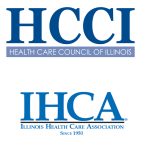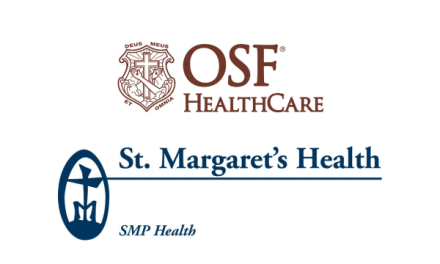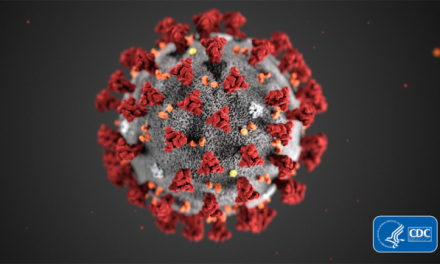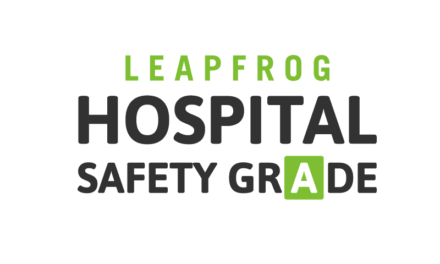
Christina Carney of SIHF Healthcare talks COVID-19 testing efforts in the Metro East region

As the number of new COVID-19 cases continues to rise in Illinois, one area that lawmakers continue to raise concerns about is the Metro East region. As of July 19, the positivity rate in the region was 6.9 percent. No other region had a rate higher than 5 percent.
Healthcare providers in the region have been working for months to provide testing and educate residents about the dangers of the virus, said Christina Carney, the chief operating officer of SIHF Healthcare, which serves 11 counties throughout central and southwestern Illinois.
Carney spoke with Health News Illinois Thursday afternoon about the rise in cases in the Metro East region, concerns about the testing supplies and how policymakers can work to inform residents on mitigation efforts.
Edited excerpts are below.
HNI: As of Thursday, what is the situation for COVID-19 in the Metro East region?
CC: We are seeing an increase in the number of confirmed cases, not unlike in other portions of the country. So as of (Thursday), St. Clair County has a positivity rate of 8.6 percent. And our new region that the state of Illinois carved out for the area, that region as a whole as of July 19 has a positivity rate of 6.9 percent. So from the SIHF Healthcare perspective, there are some things that we’re doing. We’ve actually been out in the community for the last two months doing community-based testing and have also had some stationary testing sites throughout the Metro East as well as some of our eastern regions of the state of Illinois. We’re really just trying to get the information out, educate people and be able to test in mass quantities versus one or two people coming in here or there. We’re trying to do that in a safe manner throughout the region. And so, right now, we’re testing about 1,000 people a week between our mobile sites and our stationary testing sites and we’re looking at opportunities and what we can do to further enhance that model so that we can get it to the patients that are seeing some of those segmented outbreaks within the counties. Because when you’re looking at county numbers or even regional numbers, that doesn’t really give you a good clue or picture of what may be going on in a particular outbreak or in a particularly small community. And so we’re working in those areas, to the places that need that testing the most, or maybe where patients have questions or don’t understand what that means to be positive and what they can do to help control and mitigate the spread of this virus.
HNI: What do you think has been driving this rise in cases and positivity rates, compared to other parts of Illinois?
CC: So what we’re hearing, and this is just what I’m hearing from communication with the health departments… they’re seeing some increase in activities related to, and I don’t necessarily want to segregate as sports activities, but summer activities for younger populations. I know that we in this region are seeing some bars and restaurants that are starting to close again because they’re concerned about the activity or concerned that they’ve potentially had some employees that were positive. I don’t know that I’m the best person to tell you this is the reason that we’re seeing it in this region because we do know that there are some employers that we’re working with that are really trying to mitigate spread in the workplace. So it’s not a simple thing, and it’s a little bit of a different population than what we were seeing early on in the virus.
HNI: What are some of the challenges faced there?
CC: One of the things that people are beginning to hear about and see on the news nationally is the shortage of testing supplies. So early on, we weren’t doing testing because we had no testing mechanism. Now we have the testing mechanism, but because our numbers are higher now than they have ever been, we’re starting to see a shortage of the supplies, which has created longer turnaround times than what we would like for patients who are being tested. So we’re probably about a week out for testing results right now. We would love to be in that two-to-three day time range for individuals just because it is easier for them to manage. We really want to encourage people, if you feel you have a reason to be tested, you should already be taking additional precautions.
So the normal precautions are going to be where you wear your mask, wash your hands, practice social distancing. If you have any reason to feel like you have been exposed or you’re having symptoms consistent with the virus, we would ask that you self-isolate or even self-quarantine. We would want people to know that if you feel like there’s a reason that you need to be tested, then you should be taking some additional precautions above and beyond what the general patient population is doing. And so if we can get those results back to them in a couple of days, it will help them take that additional precaution and that additional step to mitigate the spread.
HNI: What can be done to help with the testing issue?
CC: We work very closely with the local health departments and the Illinois Department of Public Health, as well as the governor’s office and the state of Illinois, and we are working with them to help get the supplies that are needed within our region. The issue is with the manufacturing and availability of it. And so we are looking at different strategies so that we have a couple of different options on where to send our specimens for testing in the event that one of our vendors or one of our partners can’t help us or runs into a shortage. So then we can have another alternative that we can easily and swiftly move between those opportunities and options.
HNI: What more can local and state policymakers do?
CC: I believe our elected officials are working very, very diligently to meet the needs of the patients in our region and the citizens in our region. I know that they’re very actively seeking information and working together with the state official to determine what the needs are and what we need to do to address that. One of the things that they have been able to set up for next week is the Illinois Department of Public Health is actually coming in as well and doing a number of community-based testing throughout the region so that we have even more availability of testing and more options for individuals. And I know this is due to the elected officials that are local really working with the state to identify the need for additional testing in the region. And so I know they’re really helping with that going forward.
HNI: Are there other steps outside of testing they can help with?
CC: Talking is definitely is a big thing, the education to individuals that this virus is still here, that this virus is still infecting people. Some of the same things that we tend to remind our employees, our staff and individuals when we’re out in the community, we ask them just to be mindful that this is here and we are having to deal with this at this time and going forward. So it’s just very important for individuals to take every precaution available to protect themselves and their loved ones.
Health News Illinois is removing the password on all stories related to the coronavirus. For the latest developments follow us on Twitter at @healthnewsil or check out our website. For complete healthcare coverage, sign up for a free trial to our daily email newsletter.









